Suphan Dağı stands tall at over 4000 meters, with a prominence exceeding 2000 meters and an isolation of more than 150 kilometers. This mountain isn’t just interesting to climb; it’s practically irresistible. With its proximity to Mount Ararat, it’s the perfect candidate for an acclimatization climb. We’ve already had a taste of acclimatization on Kara Dağ and Mor Dağı, but you can never have too much of it. Our itinerary looks like this:
- Day 1: Long drive from Yüksekova to the Suphan Dağı camp at 2 503 meters.
- Day 2: Summit at 4058 meters, descend, and drive to the Doğubayazıt hotel.
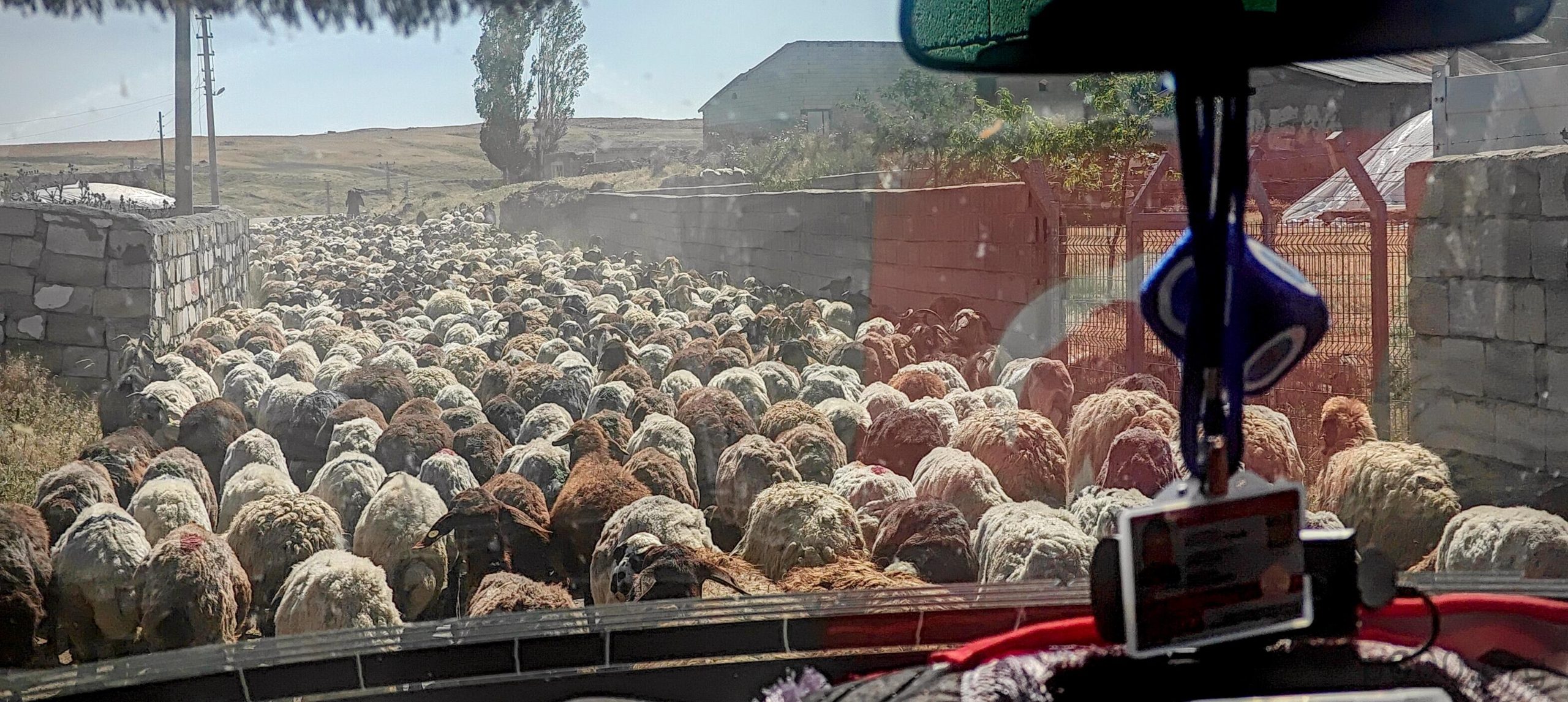
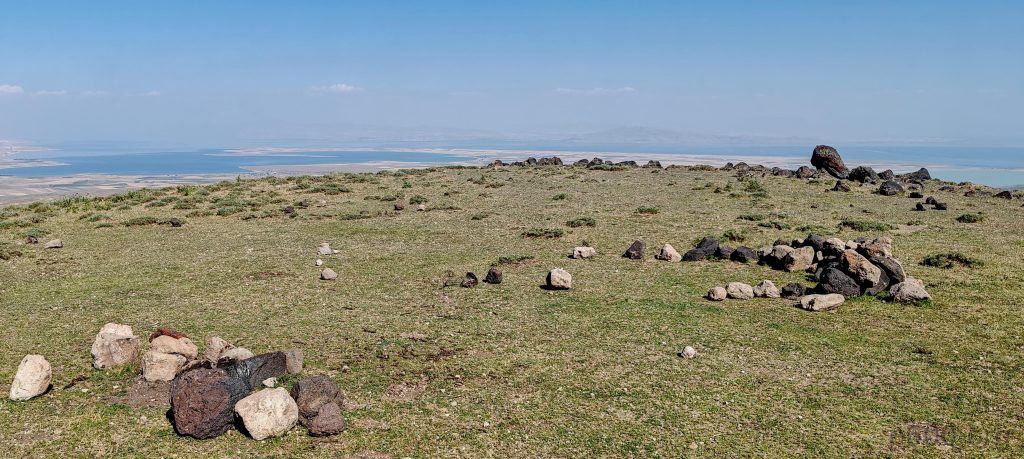
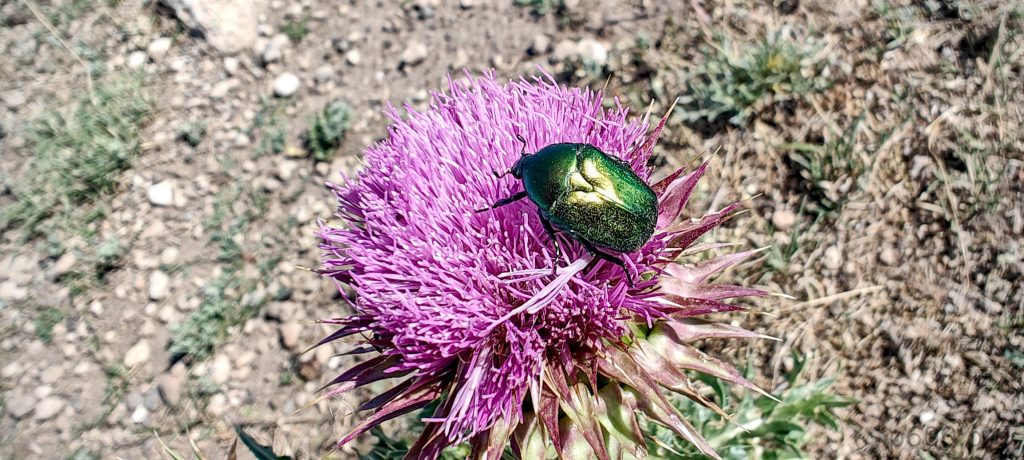
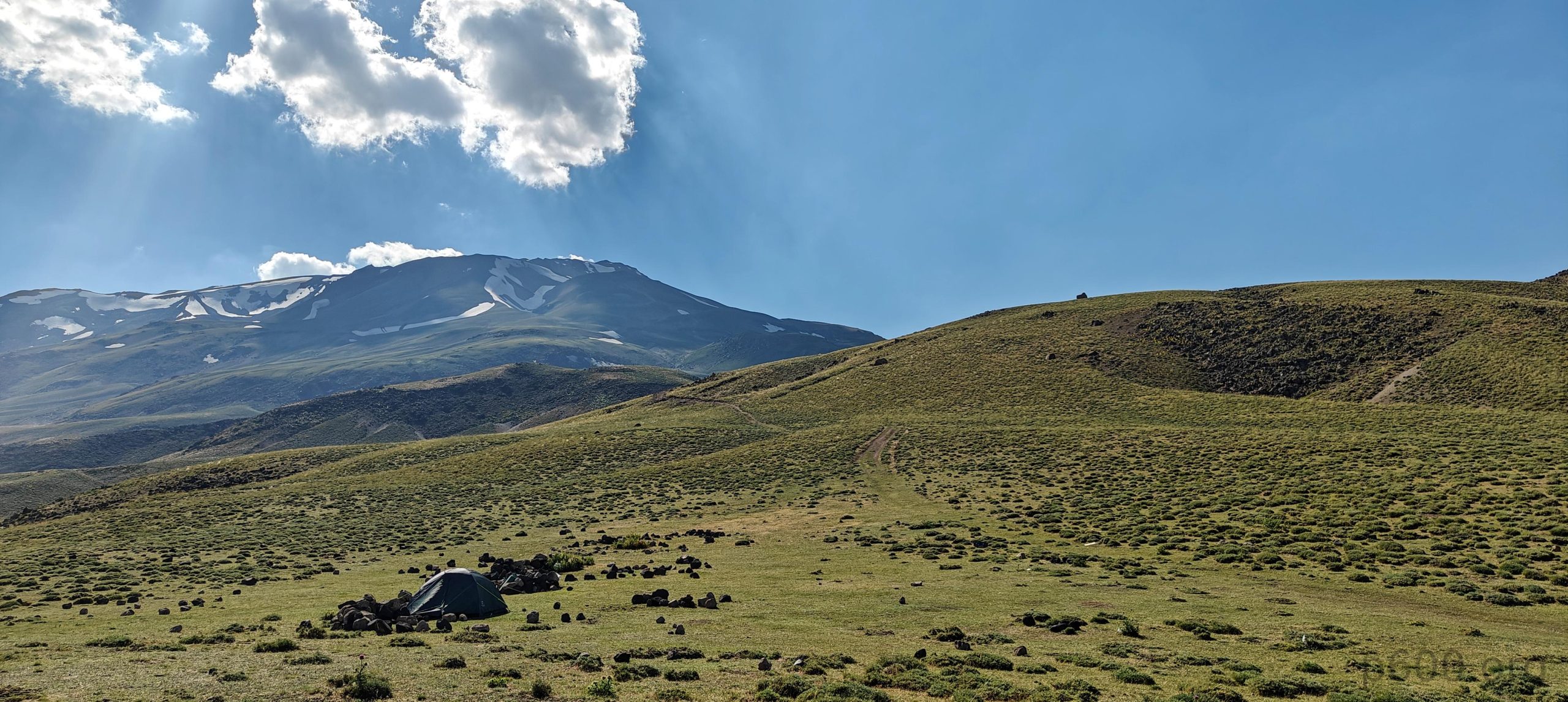
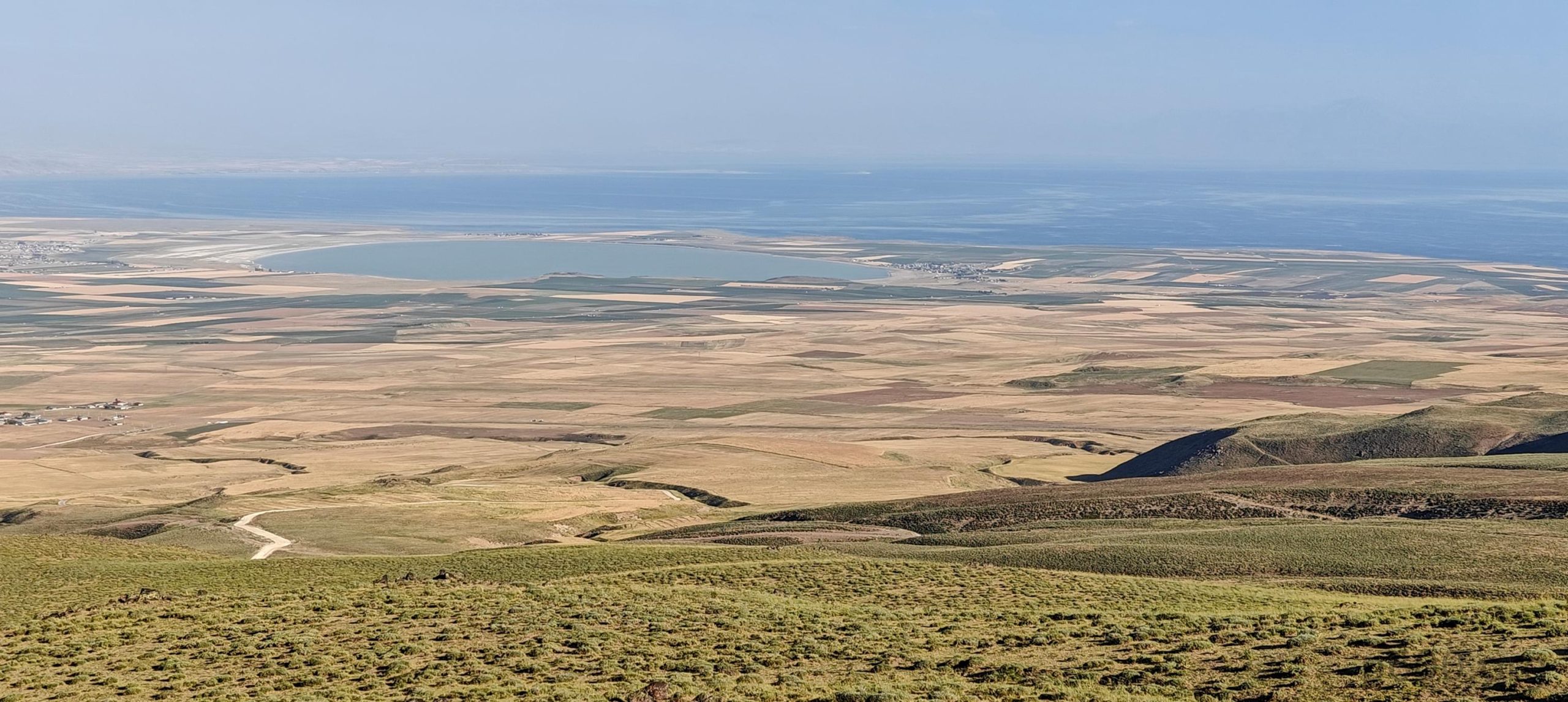
Camping is on a nice, big, flat-ish field with time-to-time-good internet reception—because who doesn’t love mixing nature with a touch of Wi-Fi? I could squeeze in some work again, lucky me. We arrived late afternoon, just in time to enjoy a meal and relax. Recep whipped up some delicious köfte for us, which was great, if you’re into that kind of thing. At night, I could hear tortoises roaming around the tent; a few even made a guest appearance in the evening. The evening view of Lake Van? Absolutely spectacular—no filters needed.

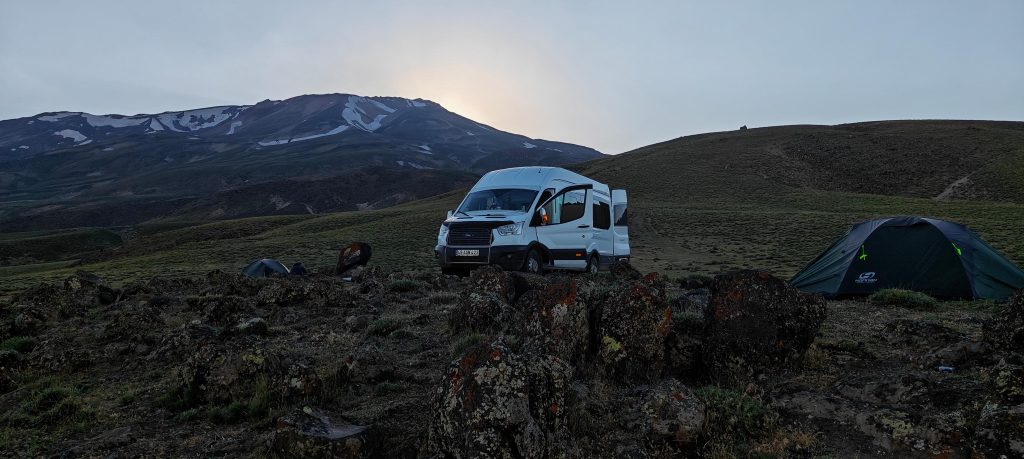
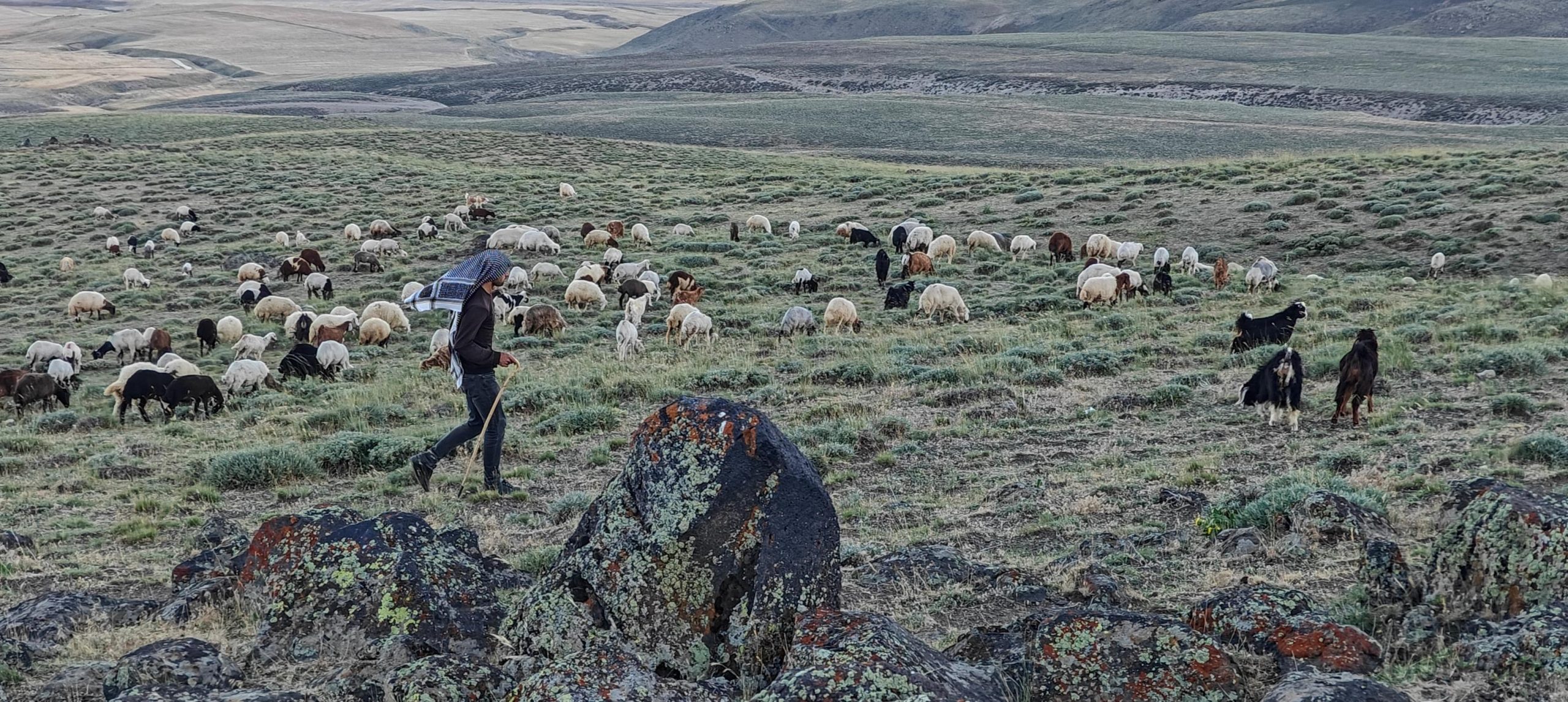
Recep suggested starting at 2 or even 1 a.m., but we all agreed that daylight hikes are the way to go. Sunrise at the camp is just as nice as on the summit—trust us. So, getting up before dawn, we packed up, had a quick breakfast, and began our hike toward the steeper slopes at 5am. The first few hundred vertical meters are on a wide and very gradual trail. Later, we hit a steeper slope covered in snow in a few small stretches, but snow is avoidable.
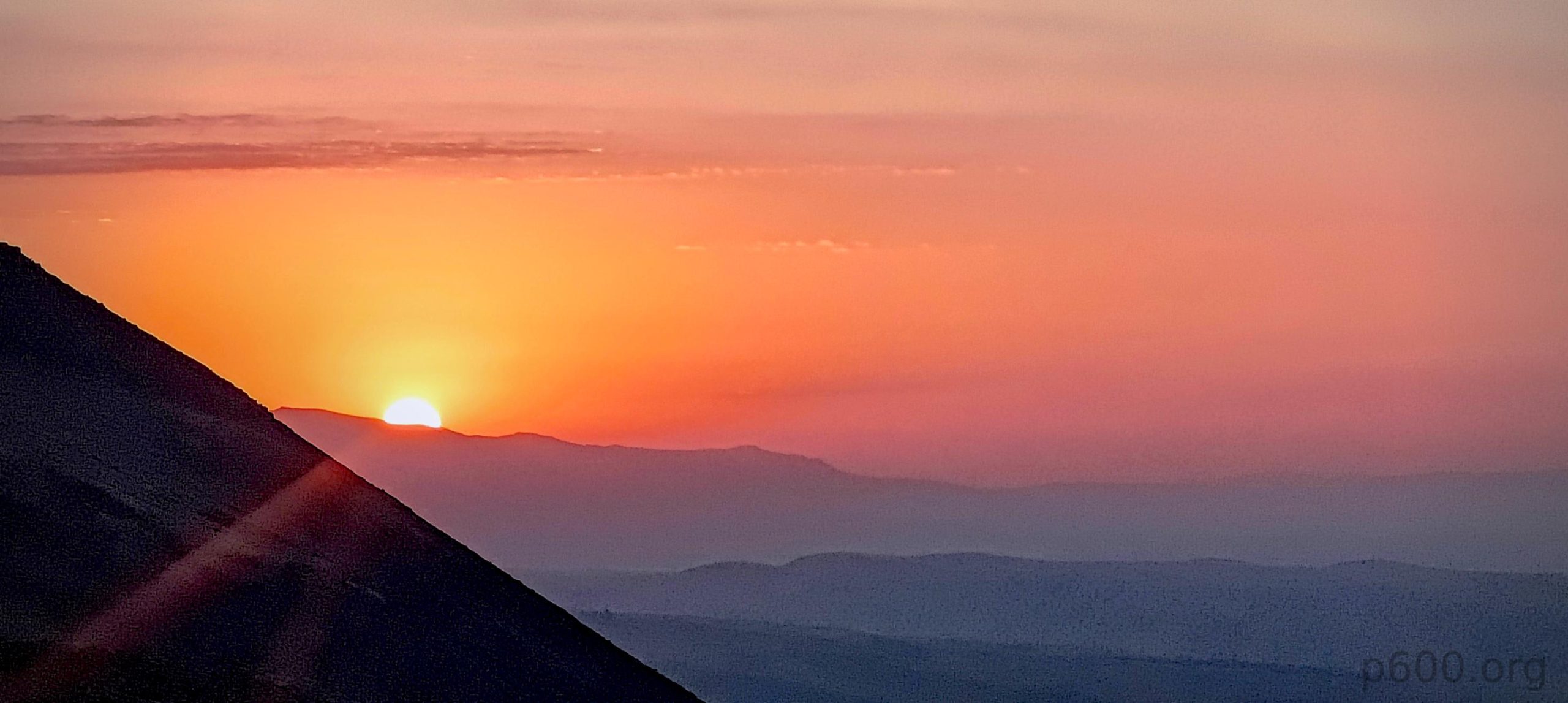
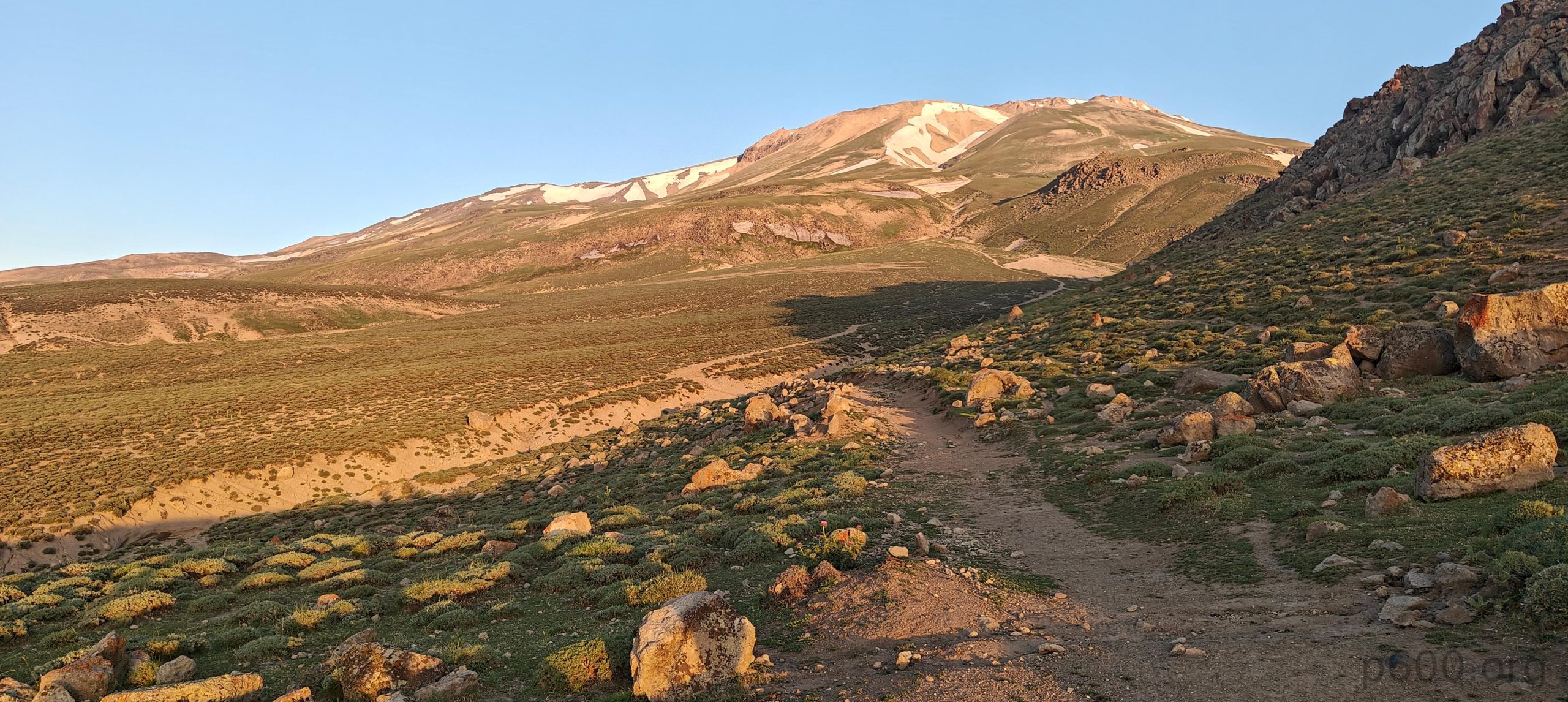
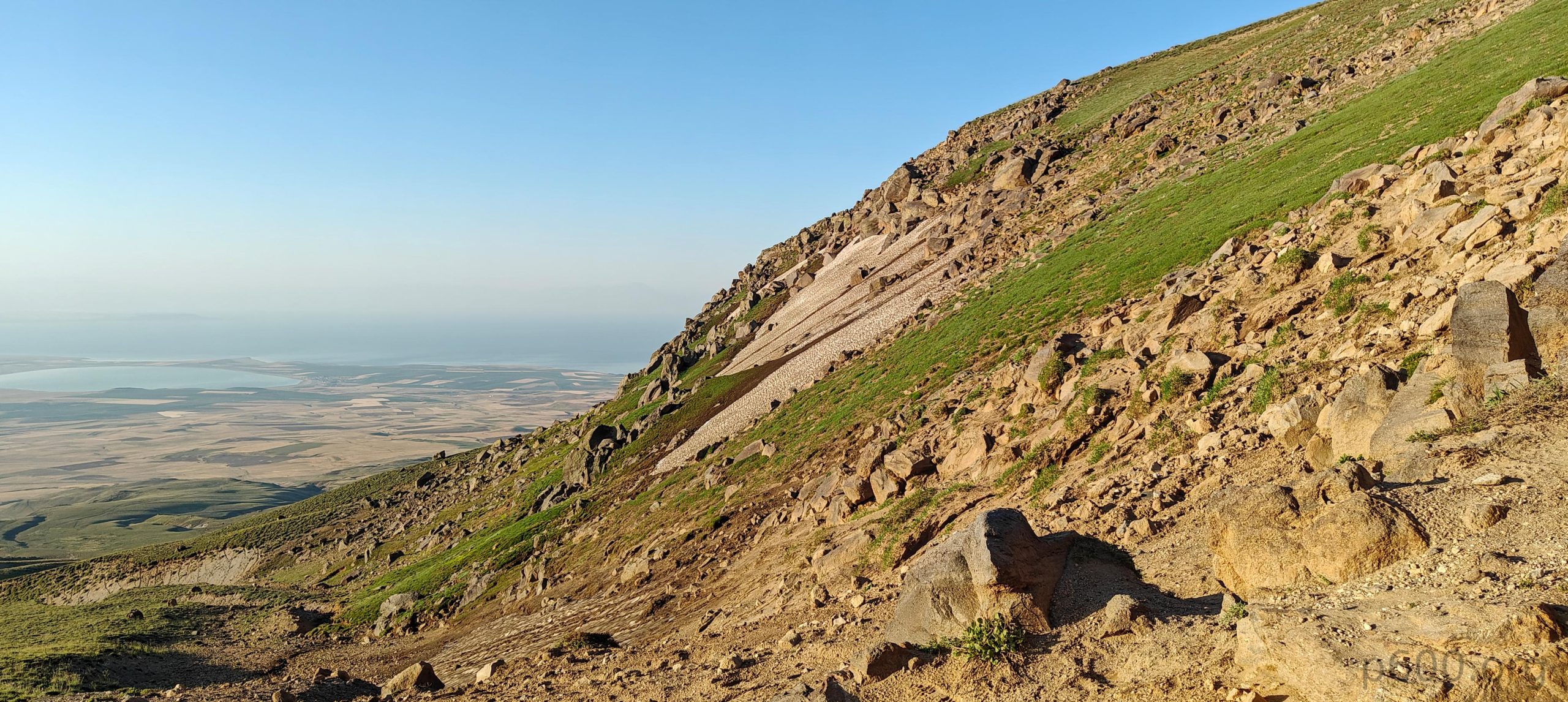
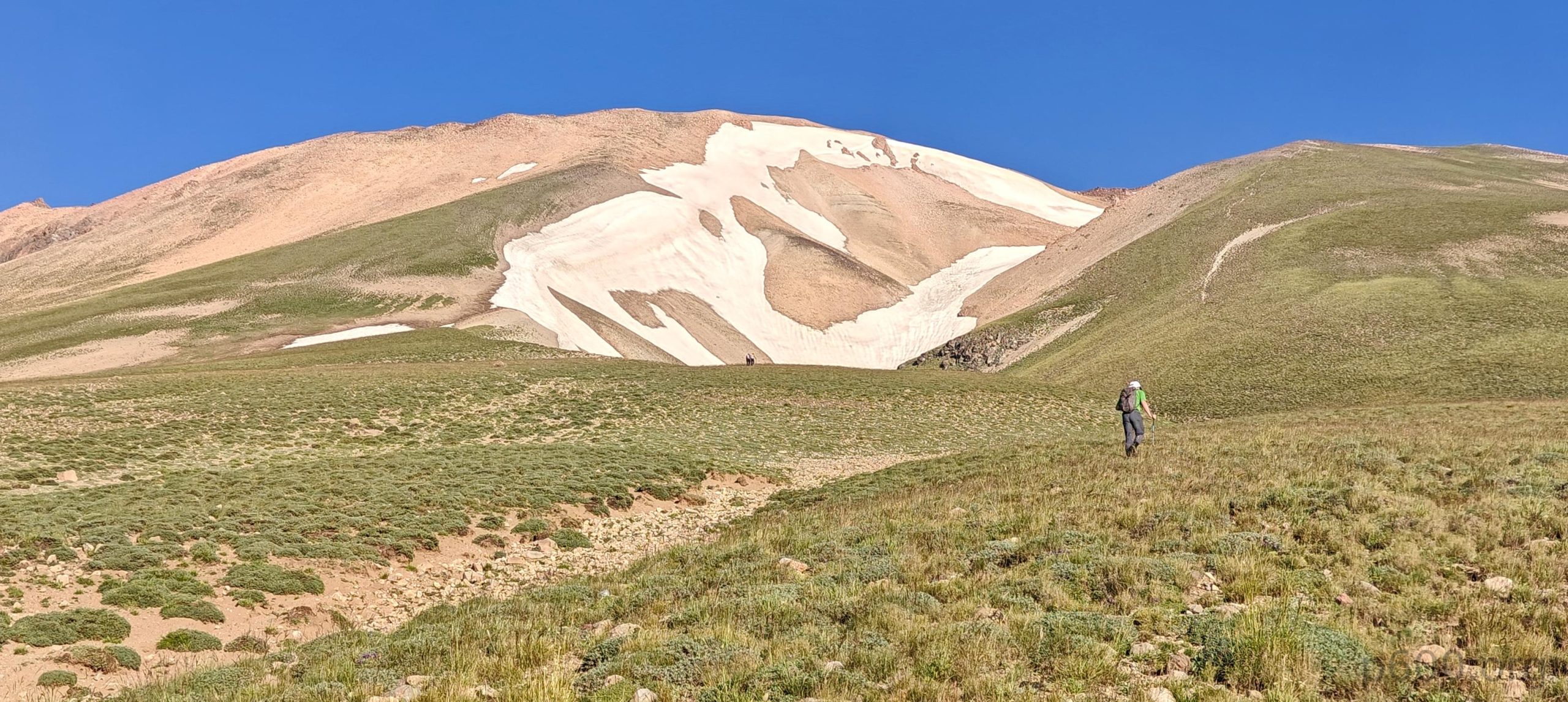
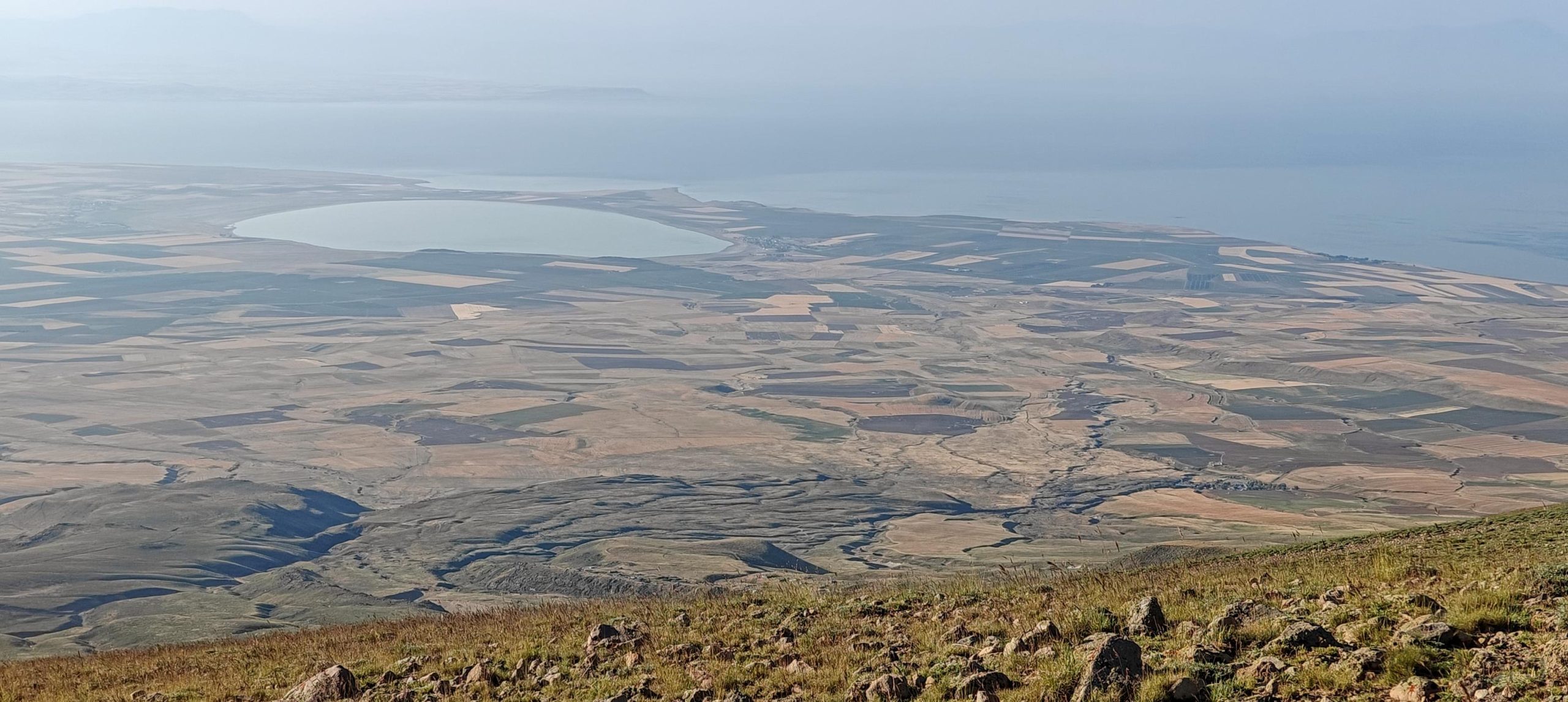
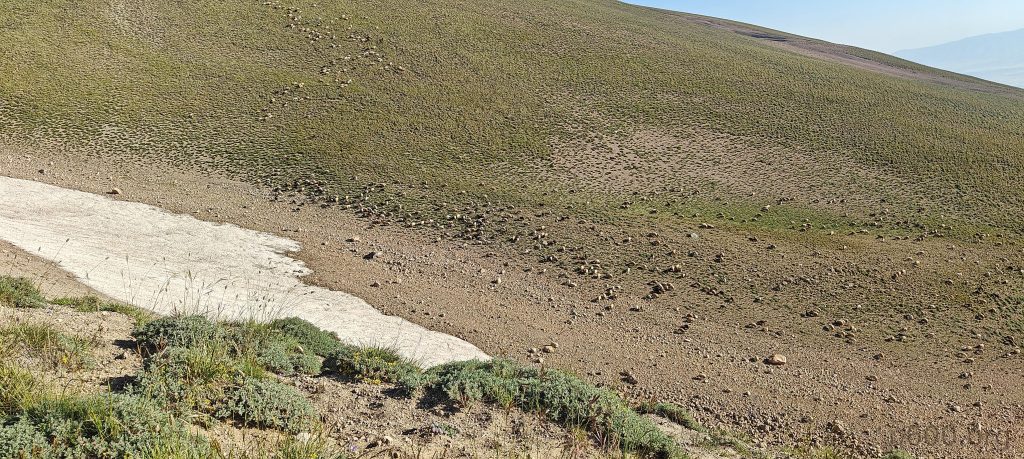
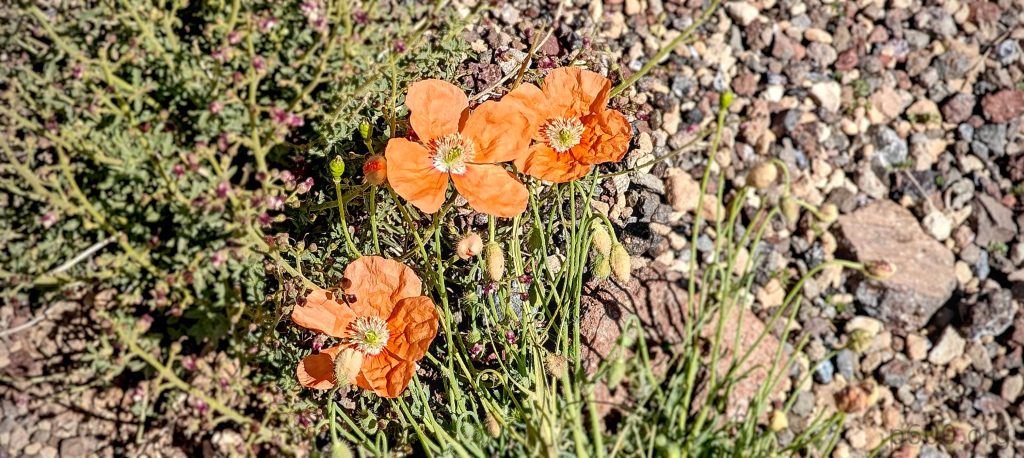

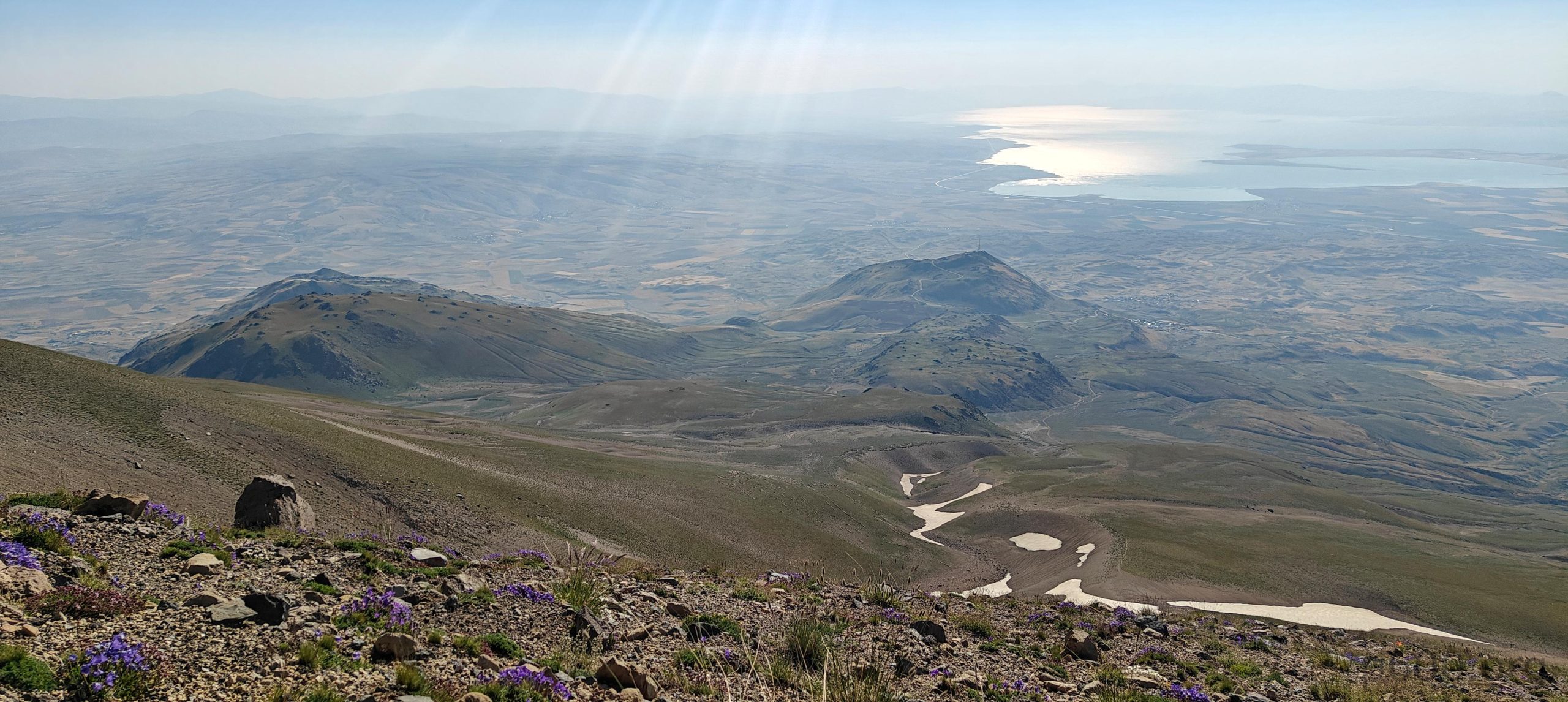
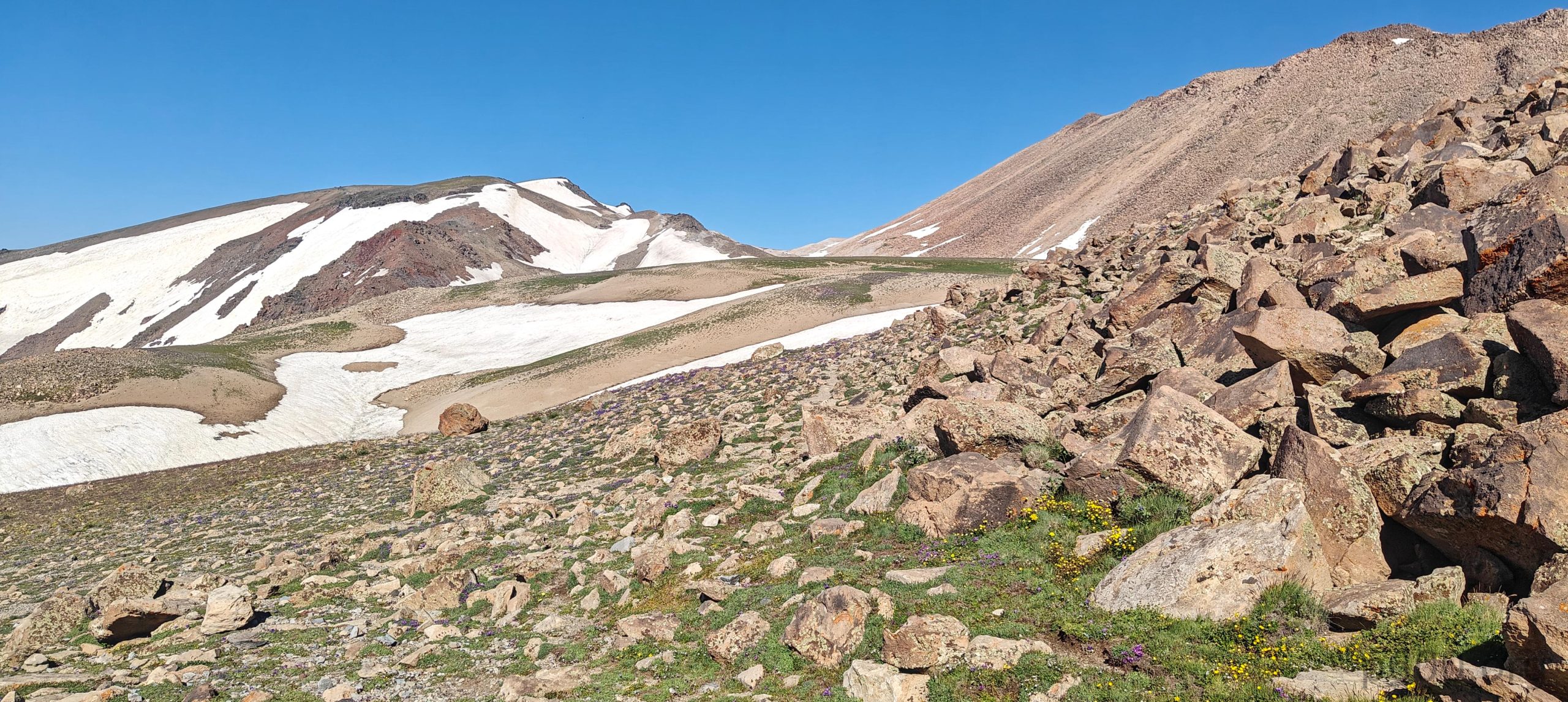
Before the summit bump, there’s a nice flat field. After crossing it, we encounter a steep, unavoidable snowfield. Okay, maybe it’s avoidable, but walking on the snow seems more appealing than the alternatives. The snow is soft, so we skip crampons (which we conveniently left at camp, another reason to skip them). After the snowfields, there’s a steep, loose scree slope, and, as expected, this terrain is tough. There’s sort of a light trail, though we’re often losing and finding it again. Relief finally comes when we reach the edge of the summit plateau, but it’s only a relief in terms of steepness. Reaching the lower northeast summit is quite the challenge. The surface is covered with boulders the size of fridge and piano, and some of them move.
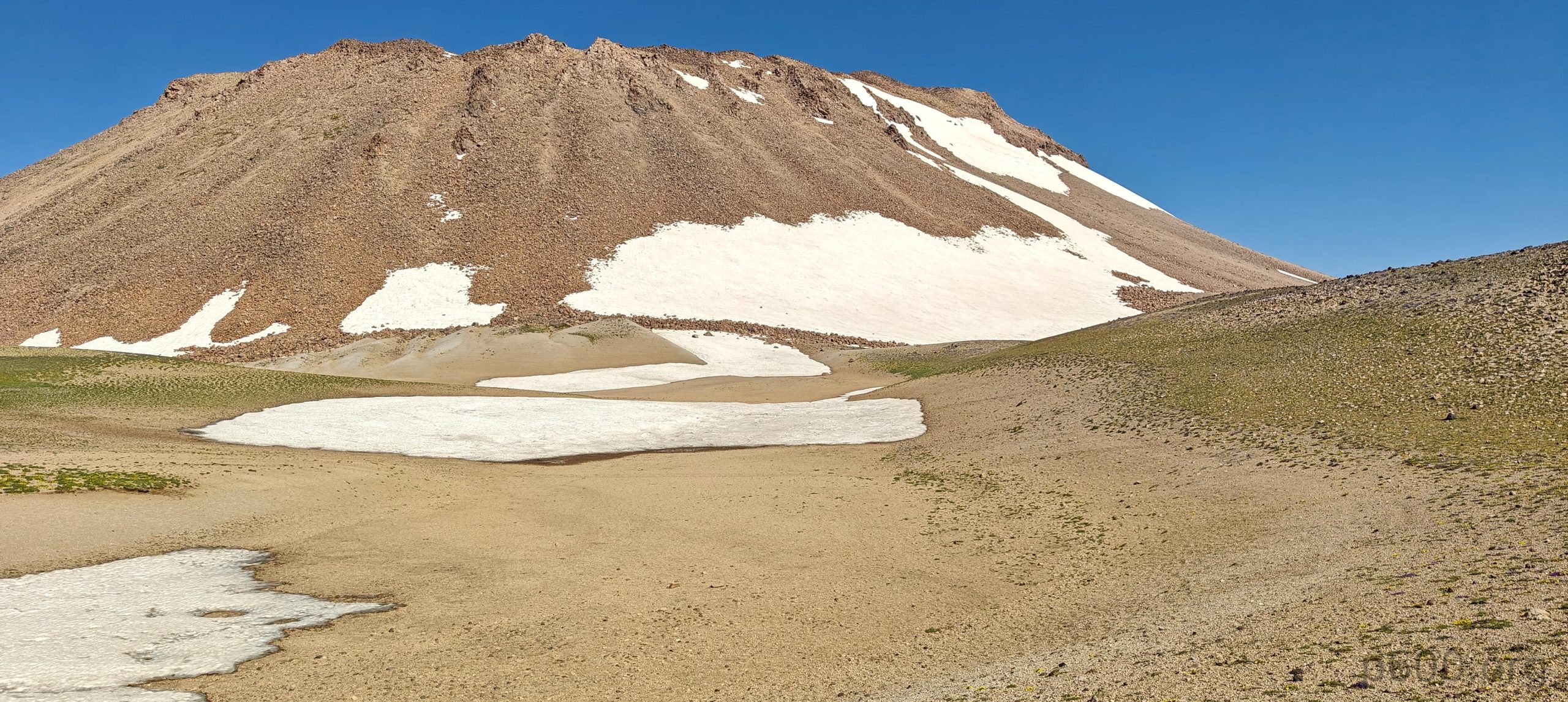
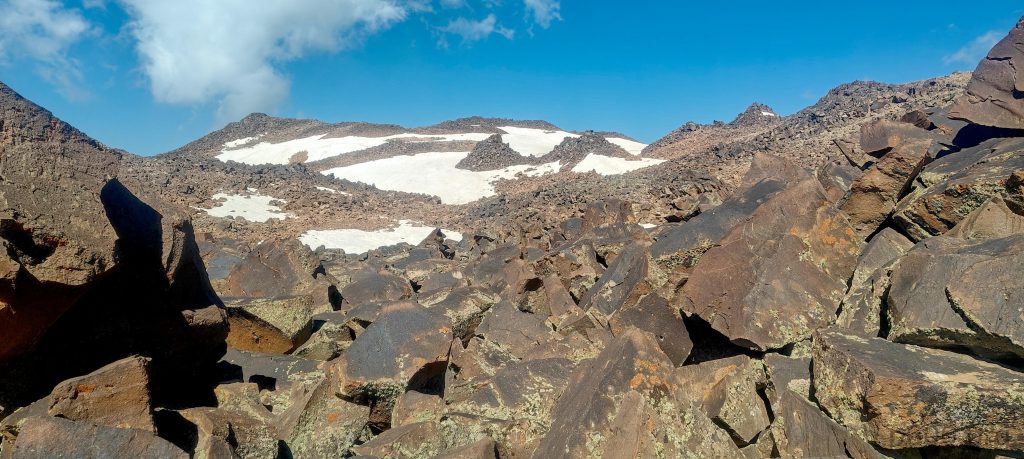
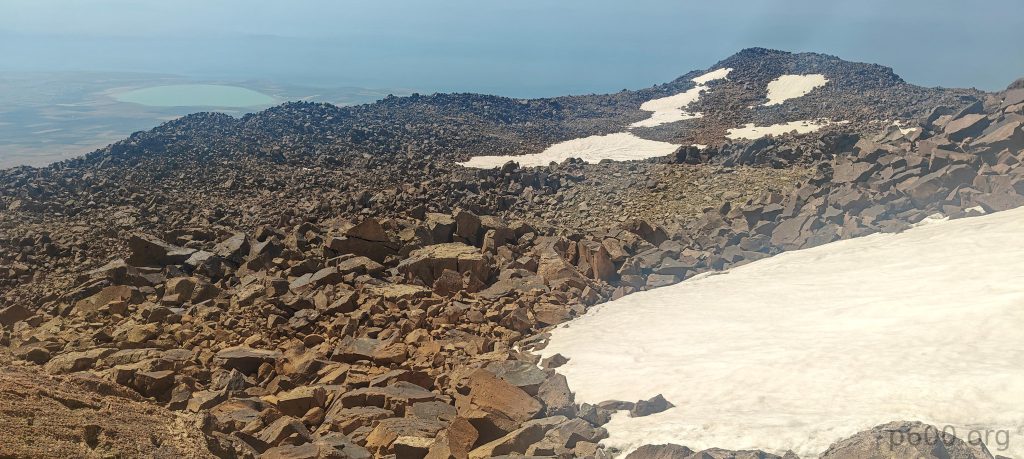
After a short break at the lower summit, we look forward to reaching the true summit in the southwest. It looks quite challenging—half a mile on this surface will be tough and slow. But in the end, it was surprisingly easy. About a third of the path was covered in snow, which made for easy walking, and the west side of the plateau is less rough, more flat, with smaller rocks. So, after fifteen or twenty minutes, I reach the true high point. Dave and Recep come little later; they tried a shortcut and climbed a snow wall.
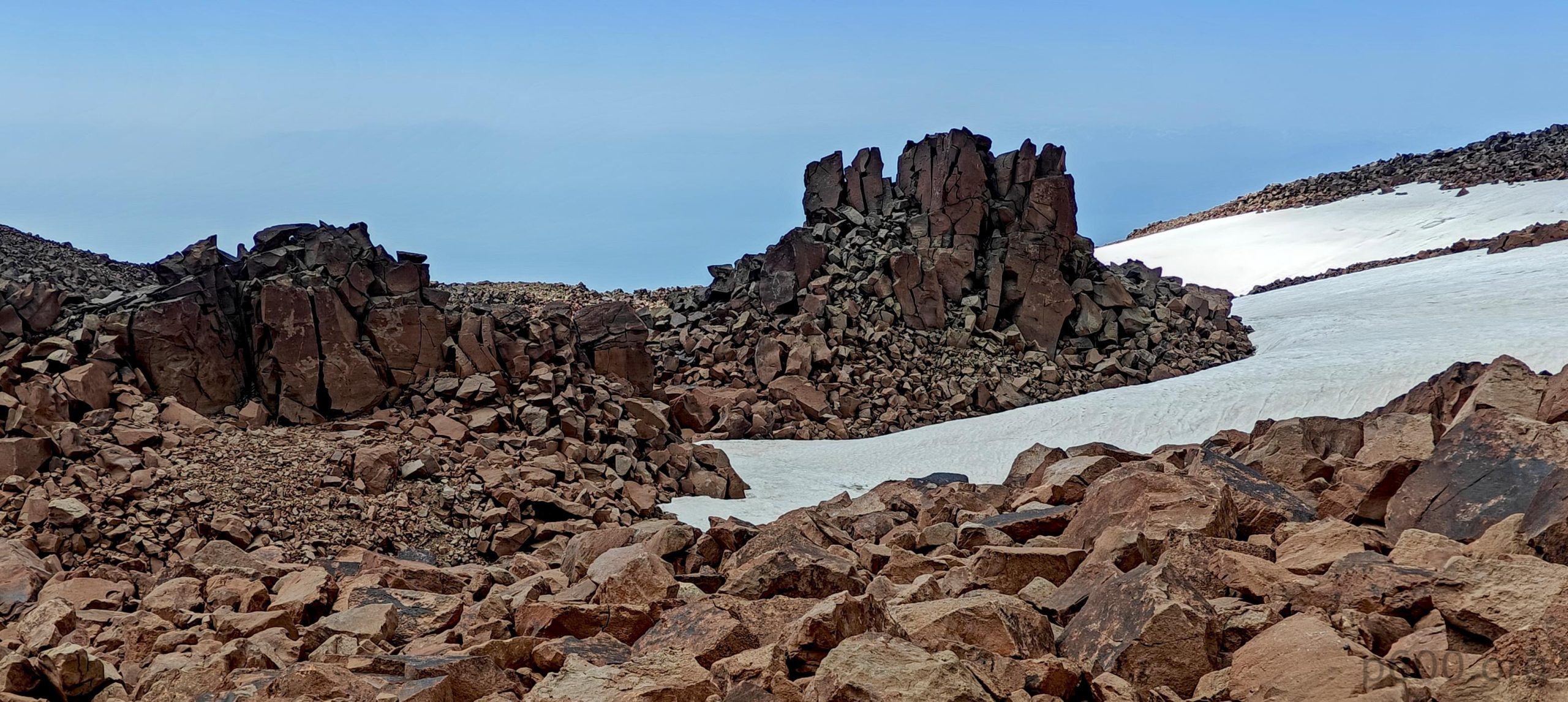
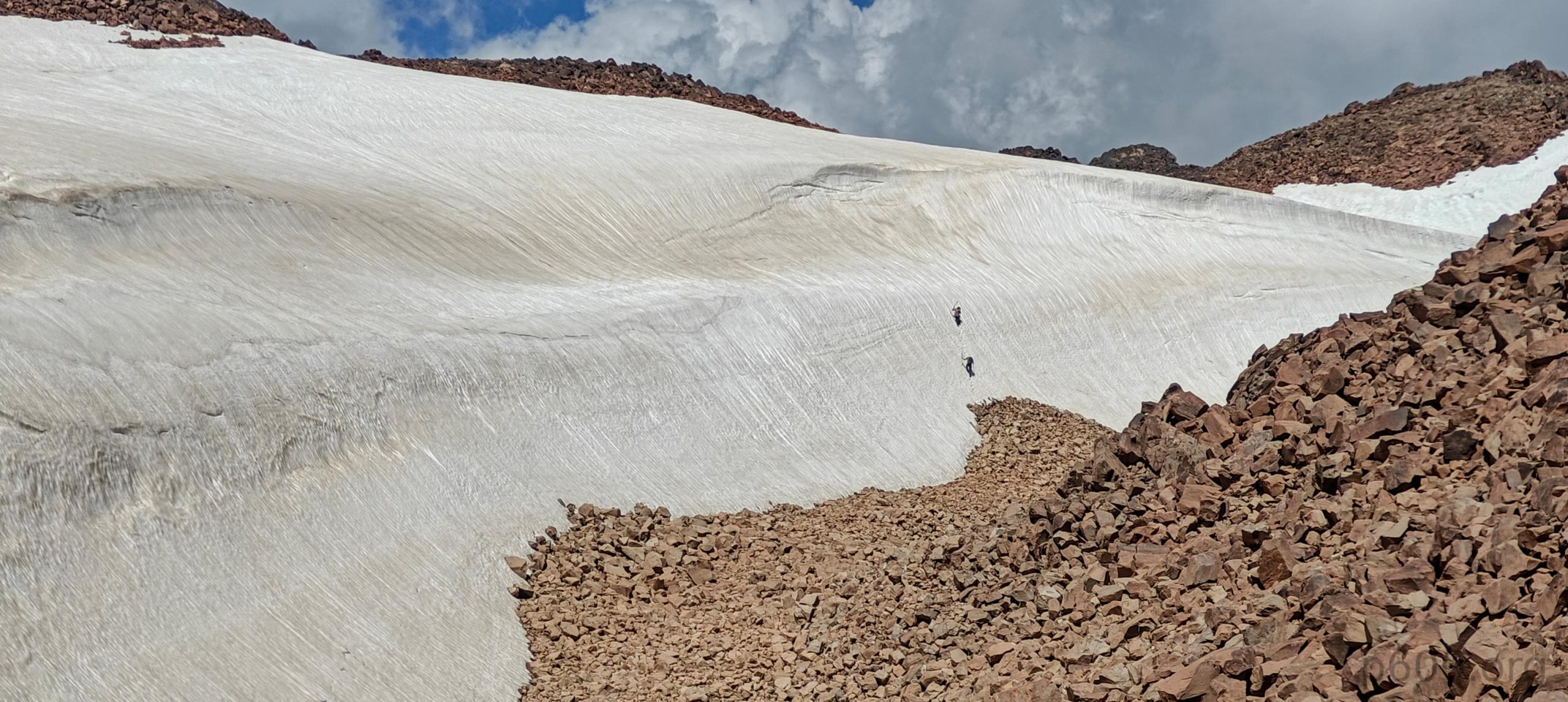

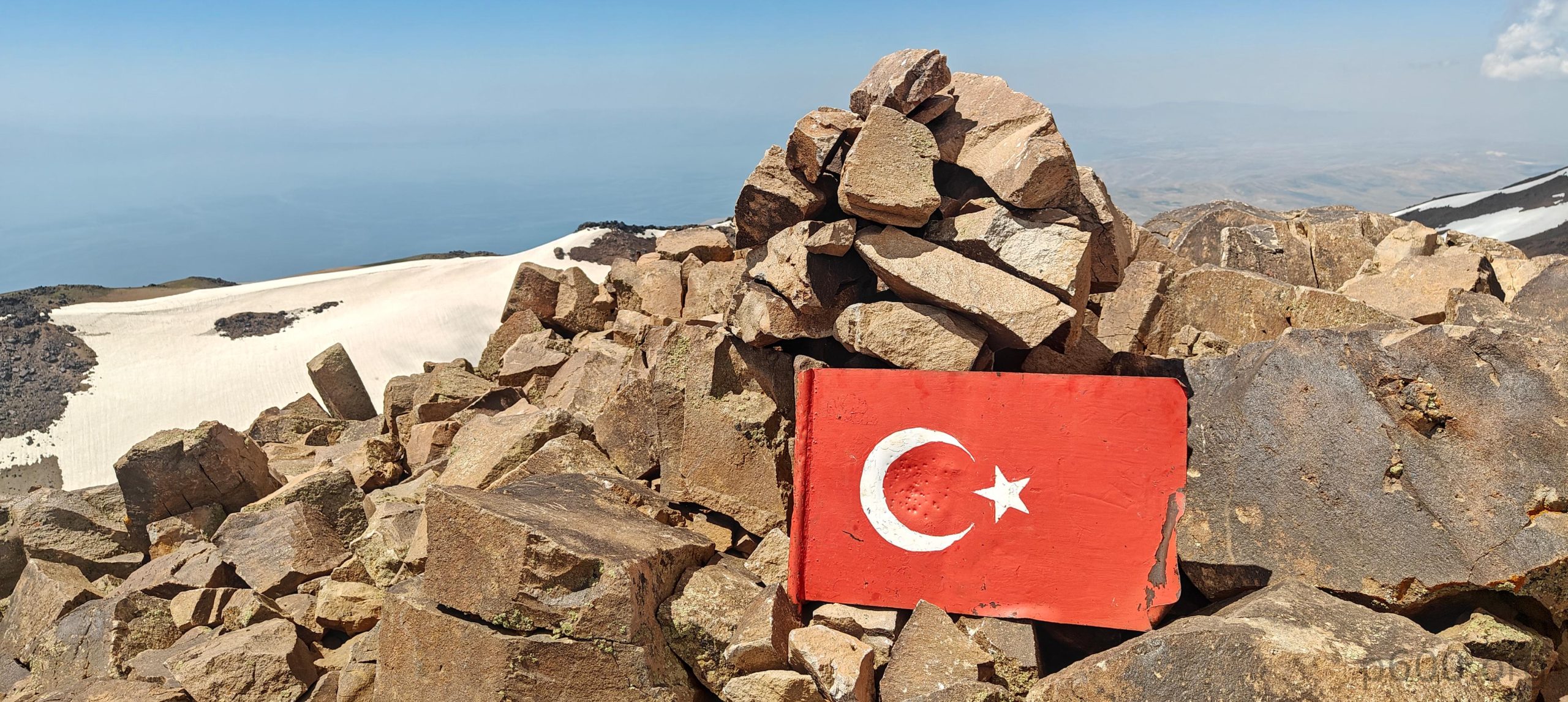
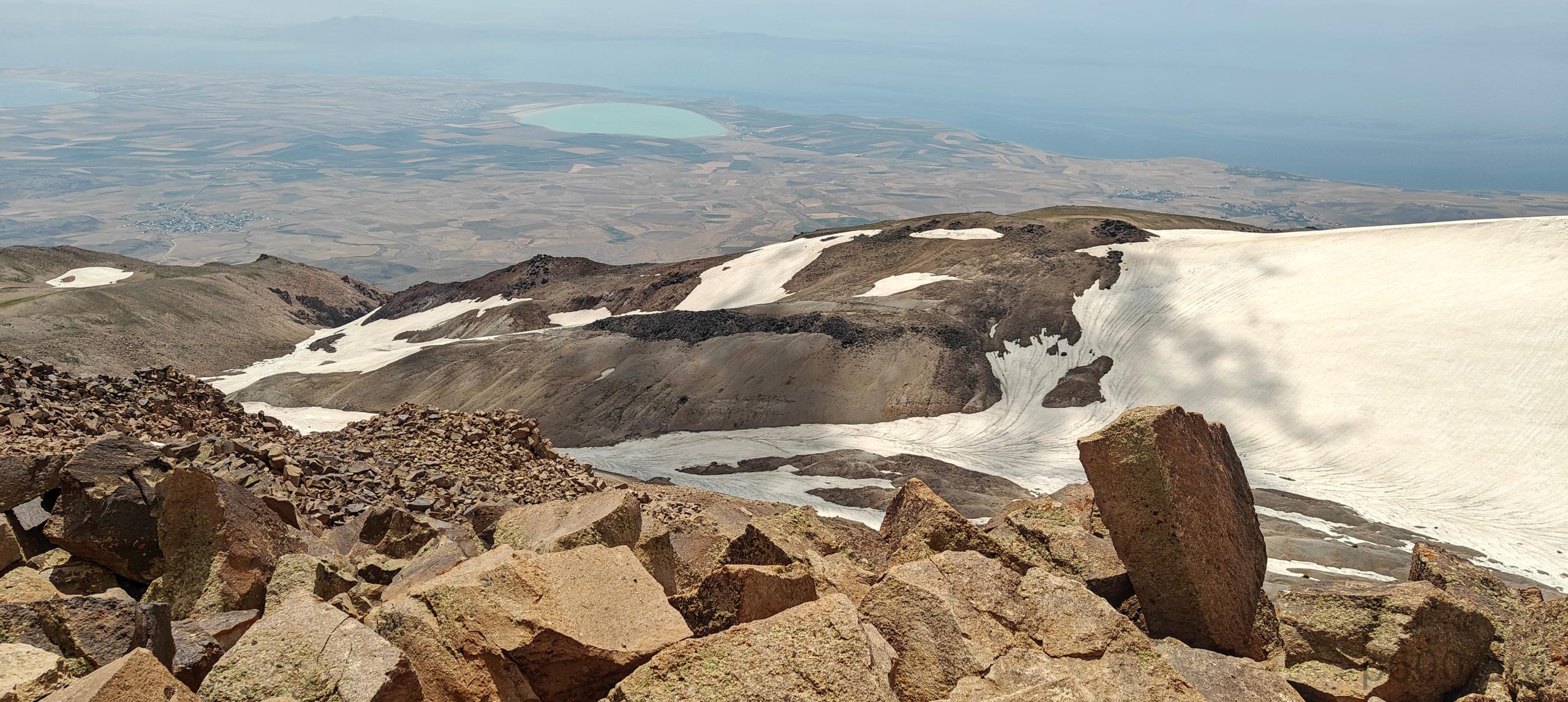
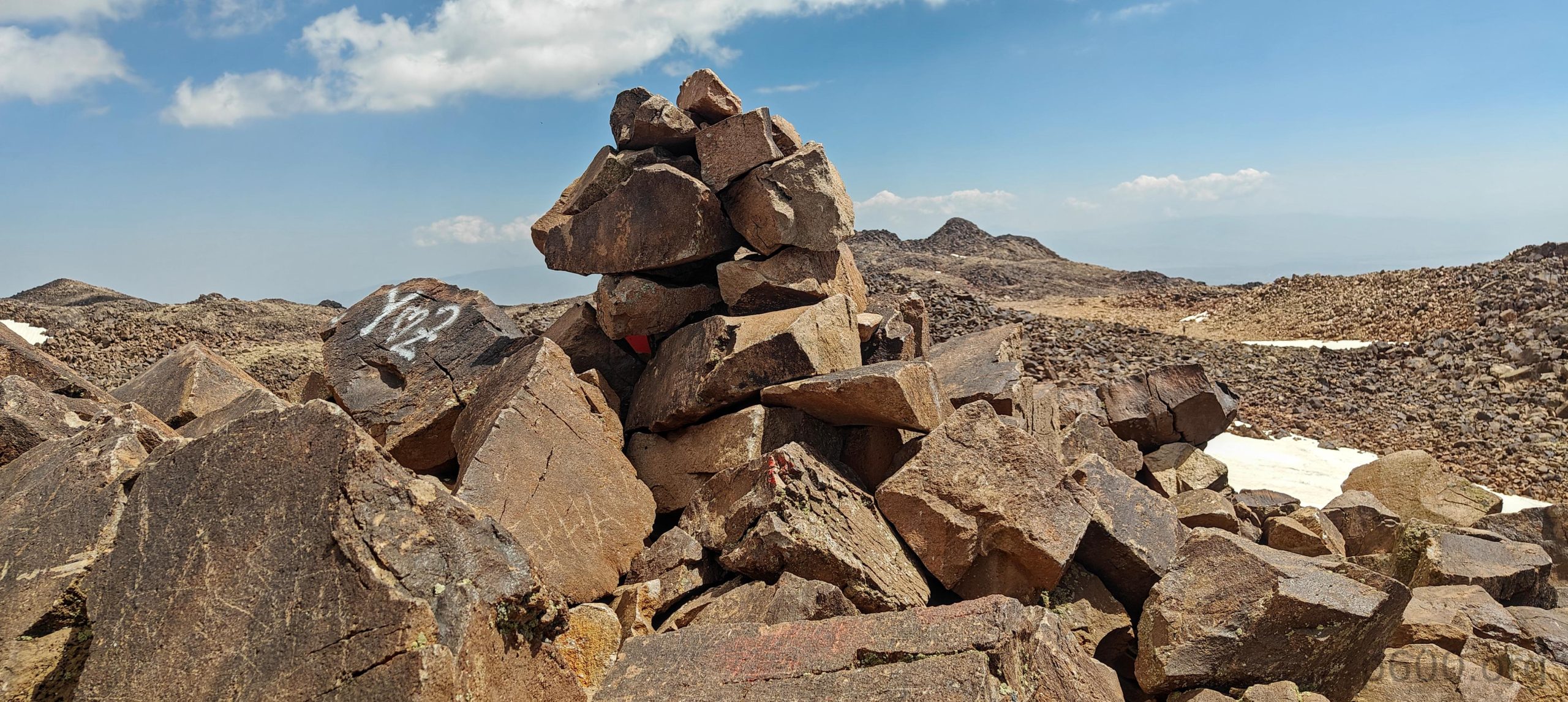
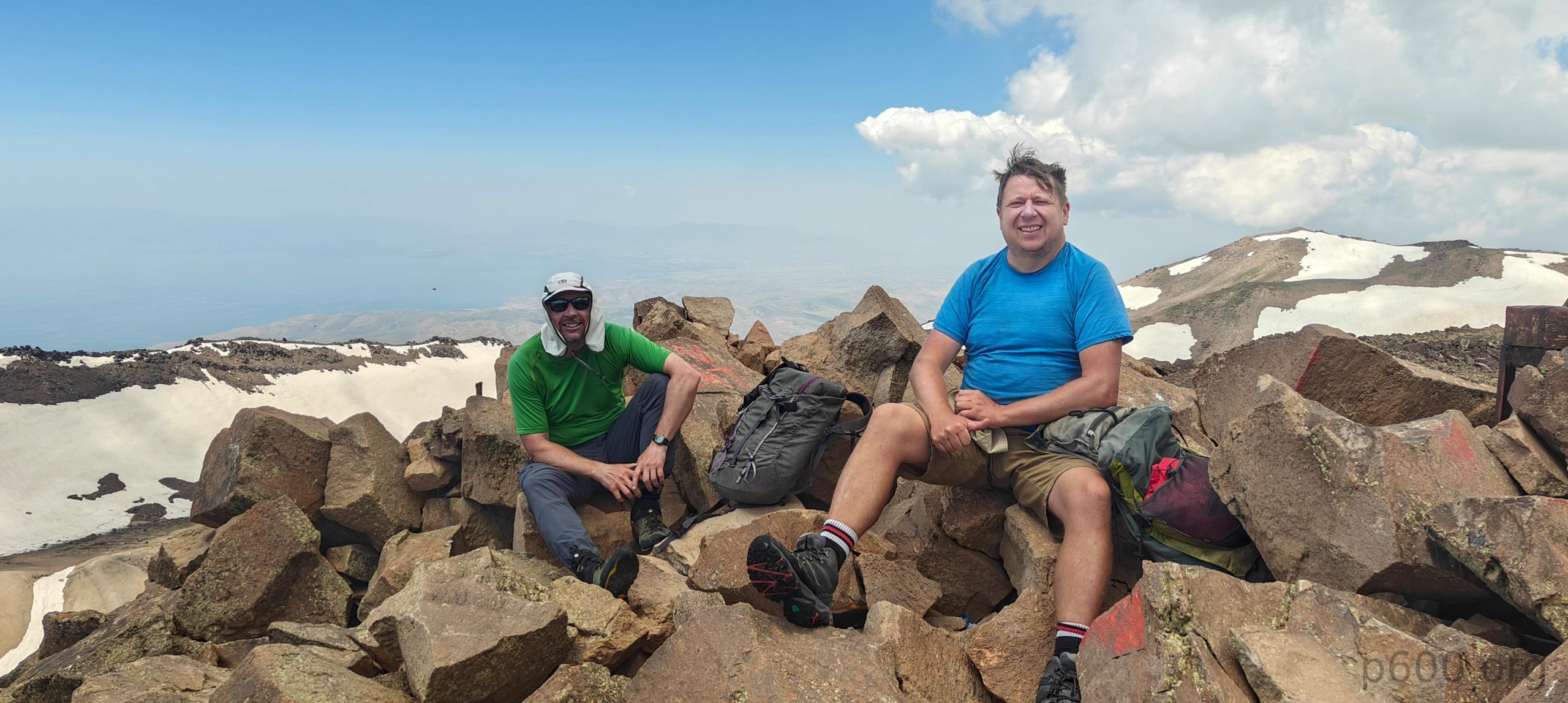
The true summit is marked with a Turkish flag, an ascent log box, and a cairn. For all three of us, this is our first ascent to the true summit. Recep had visited the lower northeast summit many times but never made it here until now. Congratulations on reaching the true high point! 🙂 We have good visibility of the lower northeast summit and even the lower northwest summit. Lake Van is visible in the distance, along with a few more peaks in the mist. One good thing about volcanoes is that it’s pretty obvious that this is the highest one in the vicinity.

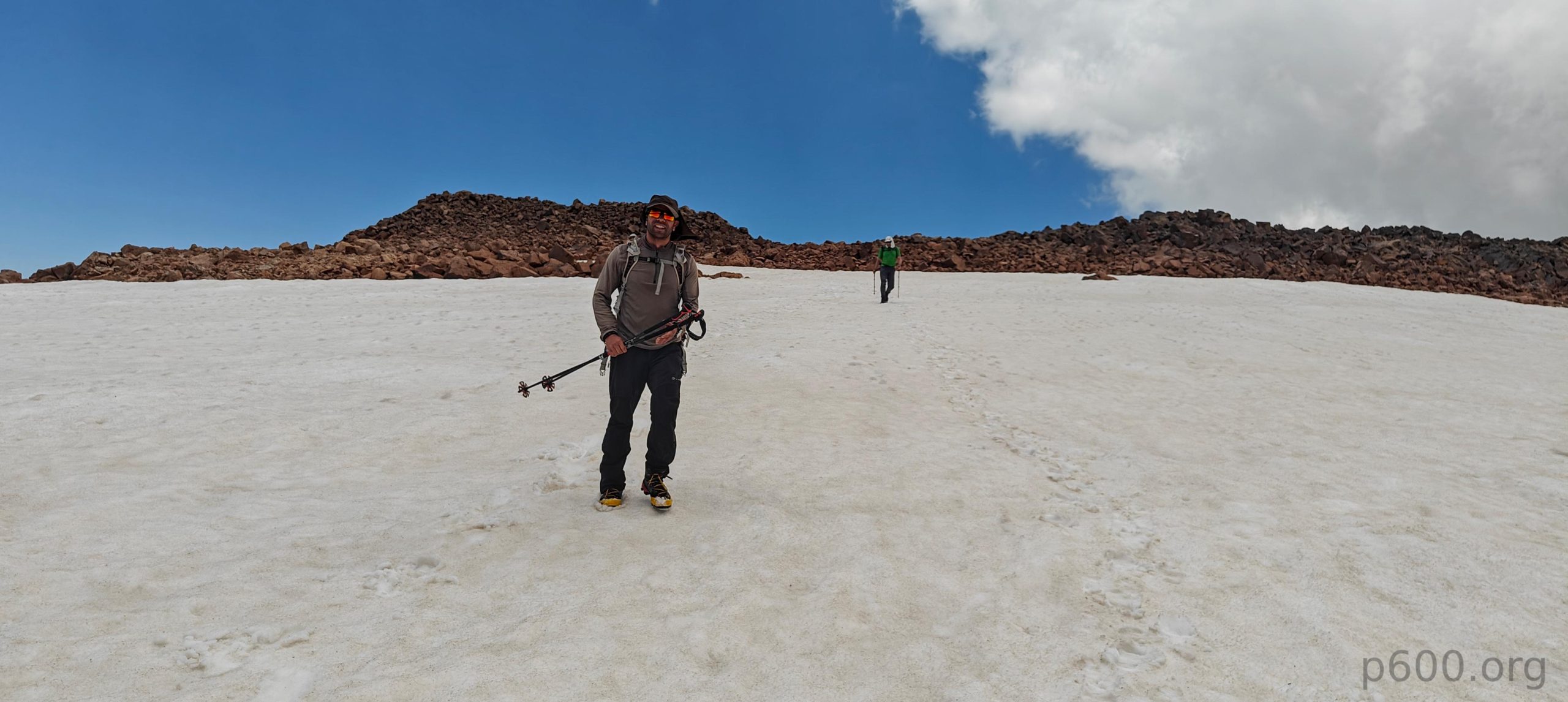
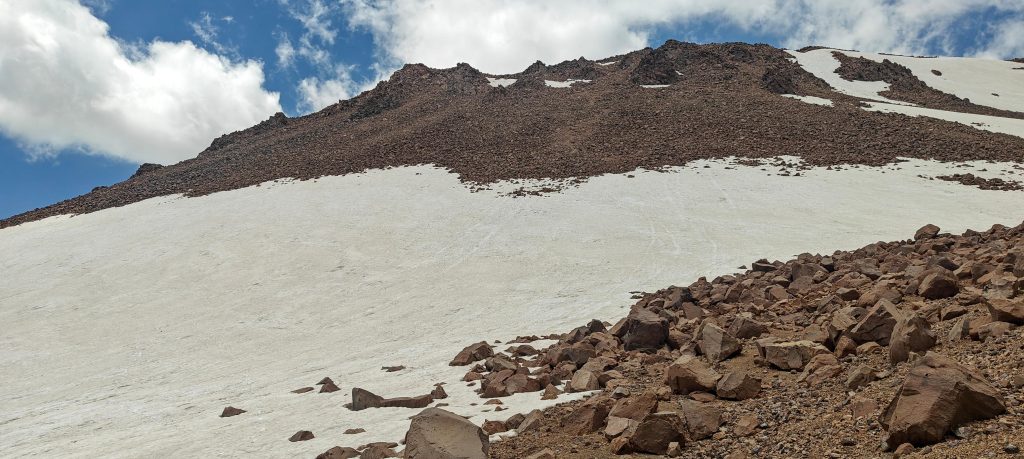
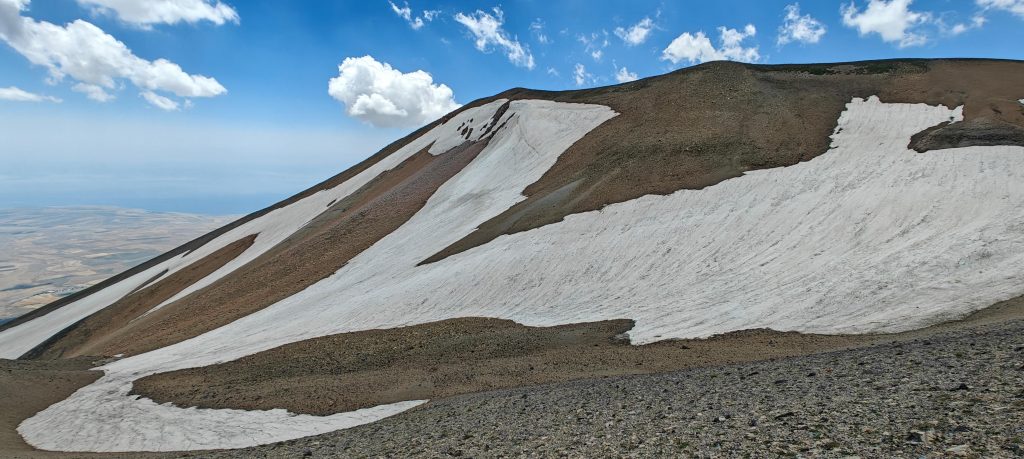
Steven and Adam decided to descend in a straight line south, expecting to make good time walking on the snow in the gully. After evaluating the slope and having a short discussion, we decided to retrace our steps back to the edge of the plateau where we climbed up and use the same trail on the scree to go down. It was a good decision, mainly because we later took a different ridge to descend, parallel to the one we came up. This trail was brilliant, with soft sand that made for a very fast descent. You could easily run down it. I think we went down in less than half the time it took us to climb up.
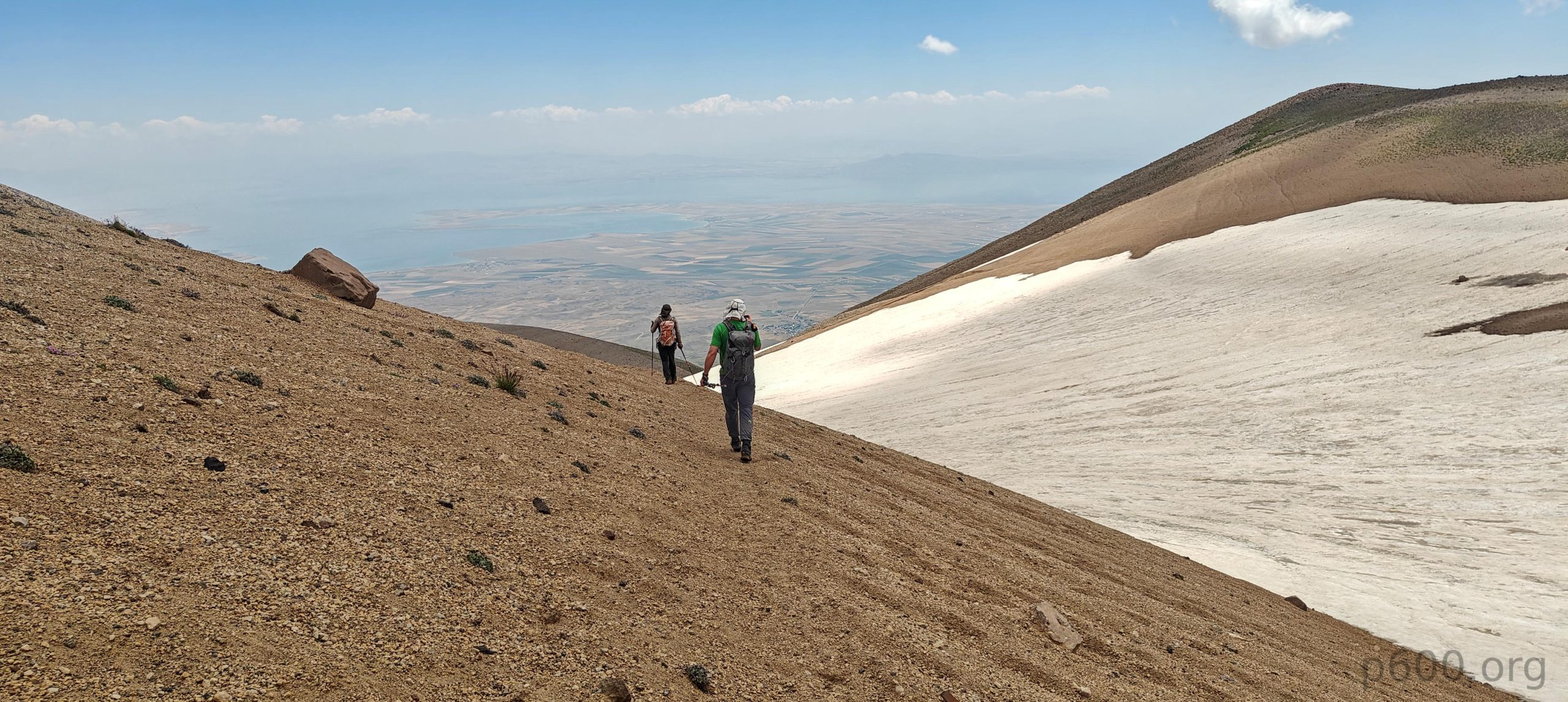
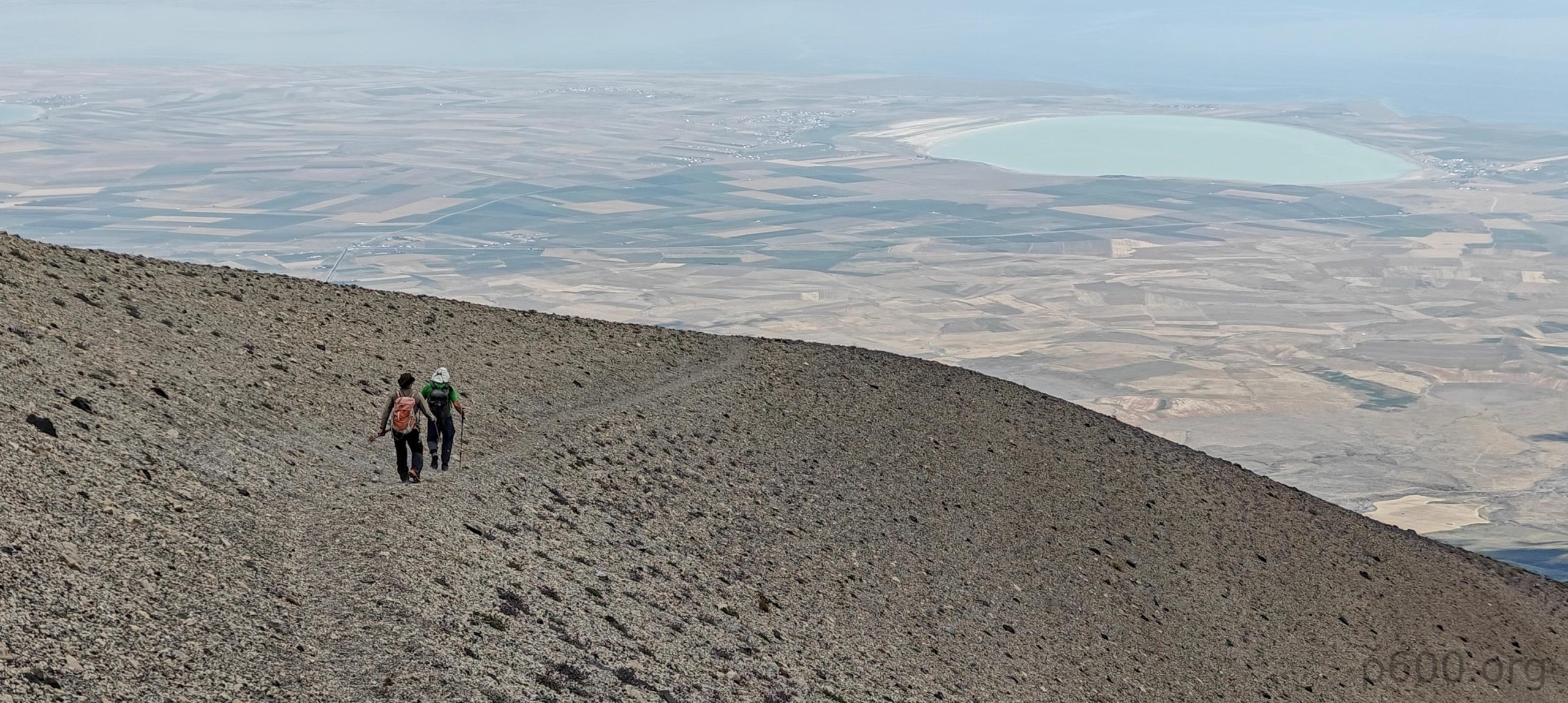
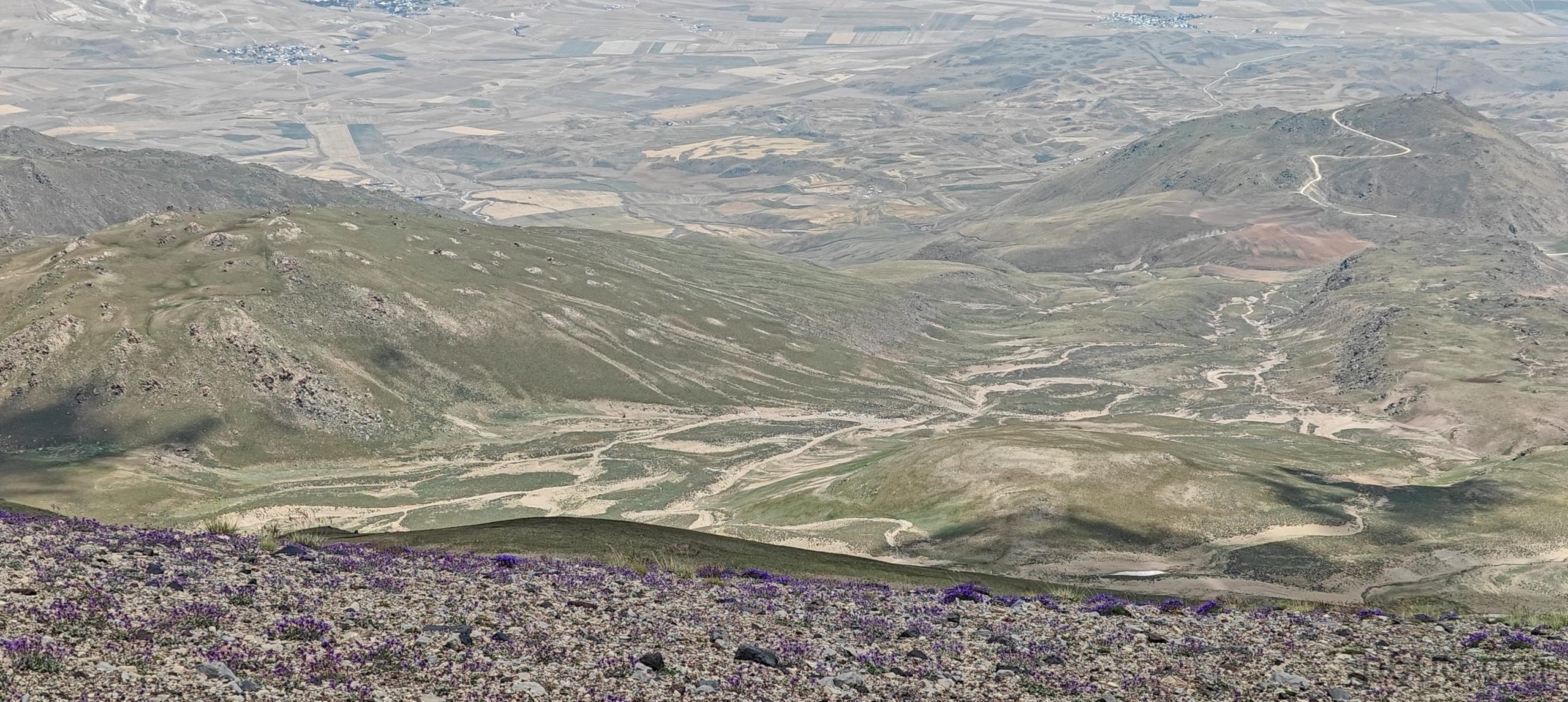
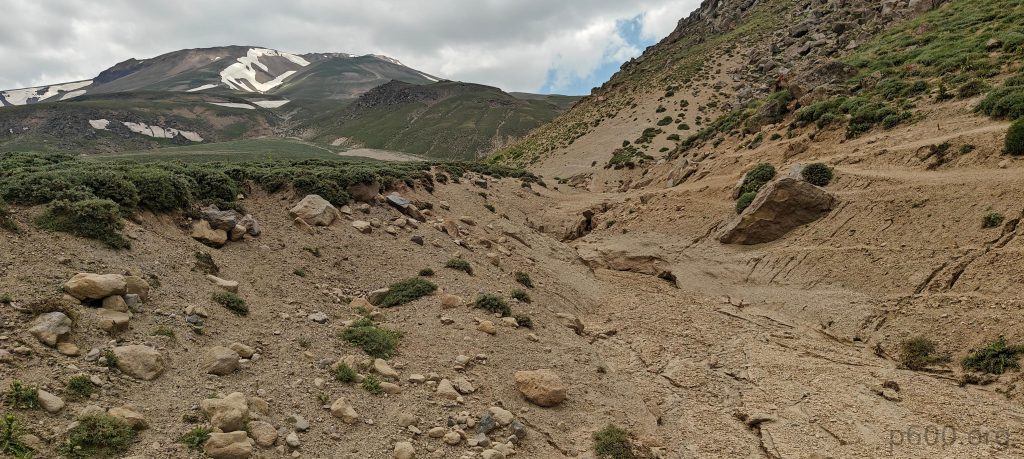
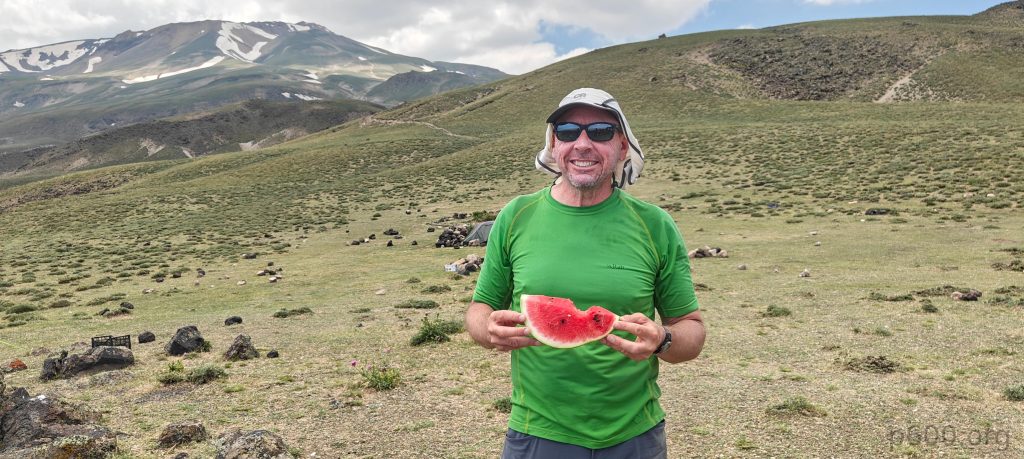
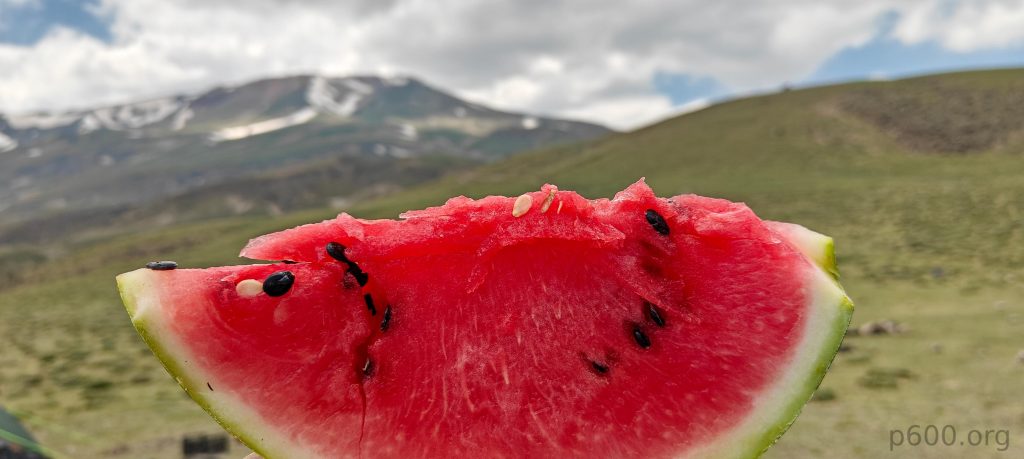
Back at camp, we found Steven and Adam—and, thankfully, another chilled watermelon. It was a memorable hike, with interesting landscapes higher up—a truly unforgettable day. We packed up the remaining tents and started the long drive toward Doğubayazıt, the city at the base of Mount Ararat. We made a quick stop in Erciş for a late lunch. I feel like we’re prepared and ready for the tallest free-standing mountain hike.

Steven’s account of our hike can be found here



